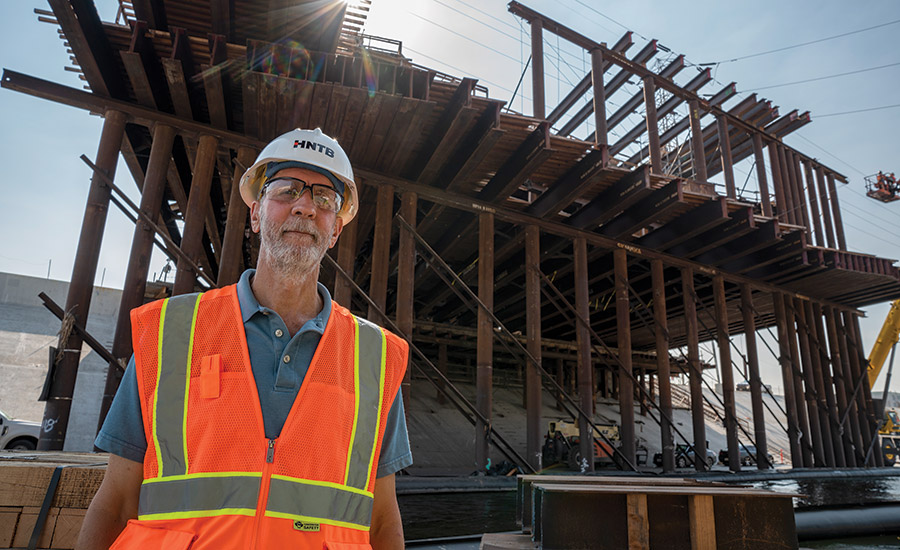ENR 2022 Top 25 Newsmakers
Michael H. Jones: Bringing Novel Seismic Concept to Fruition Through Collaboration

Jones brought a concept he had long pondered to reality through collaboration with EPS on the Sixth Street Viaduct.
Photo courtesy HNTB
Related Article:
Los Angeles' 6th Street Viaduct Aims To Connect Communities
Back to:
25 Top Newsmakers
If the 6-ft, 4-in.-tall Mike Jones had only been a bit taller, he might not have become a veteran of Southern California infrastructure. “I needed another four to five inches,” says the former high-school basketball forward.
Instead, Jones earned a civil and structural engineering degree. The now-principal engineer and associate vice president with HNTB went on to help build sanitation plants and a number of notable bridges.
One of those bridges, the new Sixth Street Viaduct, features third-generation triple-pendulum bearings and a secondary system that engineers believe will allow the bridge to function even after a 1,000-year seismic event.
The systems, developed and patented by Earthquake Protection Systems, came at the request of Jones. Implementing such a high-performing seismic solution was especially challenging for a unique design that included 10 architecturally striking arches.
“Sometimes on large projects, sound seismic solutions get implemented in the process of solving certain design constraints,” says Anoop Mokha, EPS vice president. “The Sixth Street project was not an exception. Because of the iconic architectural configuration, it was not possible for HNTB to design the bridge conventionally without significantly changing the architecture,” he explains. “Mike Jones was aware of EPS technology for seismic isolation, which would significantly reduce seismic demand. We started working with Mike Jones and once our solution worked for retaining original architecture, we convinced him to implement the functionality concept beyond AASHTO code life-safety criteria.”
Evolving Ideas
Jones started off working in construction, including for Orange County Sanitation treatment plants. While “it was good to get out in the field,” he adds that “my heart was in design.” The three-decade HNTB employee has worked on notable West Coast bridges including the Tacoma Narrows Bridge, Portland’s Tilikum Bridge and the new Gerald Desmond Bridge in Long Beach, Calif.
But when HNTB and architect Michael Maltzan began design on the Sixth Street Viaduct replacement in 2013, the need to cant the arches outward on a wide structure posed a challenge. “It’s a very wide bridge, so it was not practical to brace the arches,” recalls Jones. “But computer simulations of ground motions showed the arches were laterally displacing an unacceptable amount.” And increasing the arch sizes would only increase potential seismic forces. “Seismic isolation was a real game-changer,” he says.
The design team took the unconventional path of putting seismic isolators in the vertical height of the columns. “We could not find a case where this had been done before,” says Jones. “That’s really what led to the new bearing development. We didn’t want bearings to be the weak link.”
Jones and his HNTB colleague Semyon Treyger had over the years pondered a secondary system that, if ground motions were larger than anticipated, the bearings would stiffen and the structure would revert to behaving like a conventional structure. When his team approached the California Dept. of Transportation about the concept, they found that Caltrans had the same idea. It now requires that all seismically isolated structures have a backup system, Jones says.
Jones contacted EPS, explaining the new methodology. “EPS got on board and started testing prototypes,” Jones says. “We were as happy as could be that it brought our concept to full fruition.”




